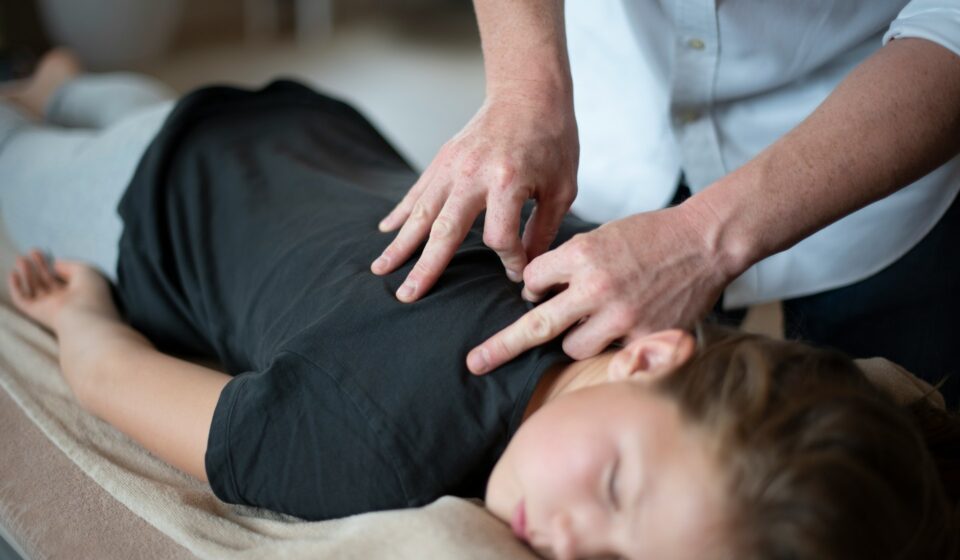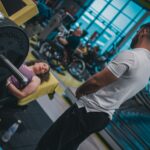
Maximize Your Recovery: Combining Massage with Physical Therapy
Recovery from injury or chronic pain doesn’t have to follow a single treatment path. Many patients discover that combining physical therapy with therapeutic massage creates a more comprehensive and effective healing experience.
Table Of Content
- The Science Behind Physical Therapy in Recovery
- Restoring Movement Patterns
- Progressive Strengthening Protocols
- Functional Training Applications
- The Healing Power of Therapeutic Massage
- Circulatory Enhancement
- Soft Tissue Mobilization
- Neurological Benefits
- Synergistic Effects of Combined Treatment
- Enhanced Exercise Tolerance
- Improved Recovery Between Sessions
- Comprehensive Pain Management
- Optimal Conditions for Combined Treatment
- Acute Injury Recovery
- Chronic Pain Management
- Post-Surgical Recovery
- Developing an Integrated Treatment Strategy
- Comprehensive Assessment
- Treatment Sequencing
- Progress Monitoring
- Professional Expertise Makes the Difference
- Specialized Training
- Collaborative Approach
- Maximizing Treatment Benefits
- Active Participation
- Communication with Providers
- Lifestyle Modifications
- Professional Treatment Options at Helix Clinic
- Embracing Integrated Healing
This integrated approach addresses multiple aspects of recovery simultaneously, often leading to faster results and better long-term outcomes.
Understanding how these two therapeutic modalities work together can help you make informed decisions about your recovery journey. Both treatments offer distinct benefits that complement each other, creating a synergistic effect that enhances healing and improves overall treatment success.
The Science Behind Physical Therapy in Recovery
Physical therapy forms the cornerstone of functional recovery by addressing movement dysfunction and structural imbalances. Licensed physical therapists use evidence-based assessment techniques to identify specific impairments that contribute to pain and limited function.
Restoring Movement Patterns
Physical therapists analyze how your body moves and identify compensatory patterns that may be hindering recovery. Through targeted exercises and manual techniques, they work to restore normal movement patterns and joint mechanics. This systematic approach helps prevent future injuries while addressing current limitations.
Progressive Strengthening Protocols
A fundamental component of physical therapy involves carefully designed strengthening programs. These protocols rebuild muscle strength around injured areas, improve joint stability, and restore functional capacity. The progressive nature of these exercises ensures that tissues adapt gradually, promoting safe and effective healing.
Functional Training Applications
Physical therapy extends beyond basic strengthening to include functional training that mimics real-world activities. This approach helps patients regain confidence in their movement abilities and successfully return to their desired activities, whether that’s playing sports, returning to work, or simply managing daily tasks.
The Healing Power of Therapeutic Massage
Therapeutic massage contributes unique benefits that enhance the recovery process through different mechanisms than those used in physical therapy. Licensed massage therapists employ various techniques to manipulate soft tissues and promote healing.
Circulatory Enhancement
Massage therapy significantly improves blood flow to injured tissues, delivering essential nutrients and oxygen while facilitating the removal of metabolic waste products. This enhanced circulation creates an optimal environment for tissue repair and regeneration.
Soft Tissue Mobilization
Skilled massage therapists can identify and address restrictions in fascia, muscles, and other soft tissues that may limit mobility and contribute to pain. Through various manual techniques, they help restore tissue flexibility and reduce adhesions that can impede recovery.
Neurological Benefits
Massage therapy activates the body’s natural pain relief mechanisms through the release of endorphins and by influencing pain signal transmission. This neurological response can provide significant comfort and improve tolerance for physical therapy exercises.
Synergistic Effects of Combined Treatment
When physical therapy and massage therapy are used together, they create a powerful combination that addresses multiple aspects of healing simultaneously. This integrated approach often produces superior results compared to either treatment used alone.
Enhanced Exercise Tolerance
Therapeutic massage sessions can prepare muscles for physical therapy exercises by reducing tension and improving flexibility. This preparation allows patients to perform exercises with better form and less discomfort, maximizing the effectiveness of their rehabilitation program.
Improved Recovery Between Sessions
Regular massage therapy between physical therapy appointments helps maintain progress by preventing muscle stiffness and promoting continued healing. This consistent care prevents setbacks that might occur with longer intervals between treatments.
Comprehensive Pain Management
While physical therapy addresses functional limitations, massage therapy provides additional pain relief through relaxation and stress reduction. This dual approach to pain management can improve overall treatment compliance and patient satisfaction.
Optimal Conditions for Combined Treatment
Certain conditions respond particularly well to the integration of physical therapy and massage therapy. Understanding these conditions can help patients and healthcare providers develop more effective treatment strategies.
Acute Injury Recovery
Following acute injuries such as sprains, strains, or contusions, combined treatment can accelerate healing while maintaining function. Physical therapy prevents loss of strength and mobility, while massage therapy manages pain and promotes tissue healing.
Chronic Pain Management
Patients with chronic conditions like arthritis, fibromyalgia, or persistent back pain often benefit from the comprehensive approach of combined treatment. Physical therapy addresses movement dysfunction and strength deficits, while massage therapy provides symptomatic relief and improves quality of life.
Post-Surgical Recovery
After orthopedic procedures, patients typically experience both functional limitations and soft tissue restrictions. The combination of physical therapy and massage therapy addresses both aspects of recovery, potentially reducing overall rehabilitation time.
Developing an Integrated Treatment Strategy
Creating an effective combined treatment plan requires careful coordination between healthcare providers and clear communication about treatment goals and expected outcomes.
Comprehensive Assessment
Both physical therapists and massage therapists should conduct thorough evaluations and collaborate on developing realistic, measurable goals. This coordination ensures that treatments complement each other and work toward the same objectives.
Treatment Sequencing
The timing and sequence of treatments should be carefully planned to maximize therapeutic benefits. Some patients benefit from massage therapy before physical therapy sessions to prepare muscles for exercise, while others may find post-exercise massage more beneficial for recovery.
Progress Monitoring
Regular assessment of progress allows healthcare providers to adjust treatment plans as recovery progresses. This flexibility ensures that both therapies continue to provide maximum benefit throughout the healing process.
Professional Expertise Makes the Difference
The success of combined treatment depends significantly on the expertise and coordination of your healthcare team. When selecting practitioners, consider their qualifications, experience, and ability to work collaboratively.
Specialized Training
Look for practitioners who have specialized training in their respective fields and understand how different therapeutic approaches can complement each other. This knowledge ensures that your treatment plan is both safe and effective.
Collaborative Approach
Healthcare providers who communicate regularly about patient progress and adjust treatment plans accordingly tend to achieve better outcomes. This collaborative approach ensures that all aspects of your recovery are addressed systematically.
Maximizing Treatment Benefits
To get the most from combined physical therapy and massage therapy, patients should actively participate in their recovery process and maintain open communication with their healthcare providers.
Active Participation
Following prescribed exercise programs, attending scheduled appointments, and practicing self-care techniques at home all contribute to successful outcomes. Patient engagement is crucial for achieving optimal results.
Communication with Providers
Regular communication about symptoms, progress, and concerns helps healthcare providers adjust treatment plans as needed. This feedback loop ensures that treatments remain effective throughout the recovery process.
Lifestyle Modifications
Incorporating healthy lifestyle choices such as proper nutrition, adequate sleep, and stress management can enhance the effectiveness of both physical therapy and massage therapy treatments.
Professional Treatment Options at Helix Clinic
At https://helixclinic.ca/, experienced healthcare professionals understand the value of combining therapeutic approaches for optimal patient outcomes. The clinic’s comprehensive approach integrates physiotherapy, manual osteopathy, and massage therapy to address the root causes of pain and dysfunction.
Their team of skilled therapists works collaboratively to develop personalized treatment plans that address each patient’s unique needs and goals. This coordinated approach ensures that all aspects of recovery are addressed systematically, leading to better outcomes and faster healing.
Embracing Integrated Healing
Combining massage therapy with physical therapy represents a comprehensive approach to healing that addresses multiple aspects of recovery simultaneously. This integrated strategy can accelerate healing, improve treatment outcomes, and enhance overall patient satisfaction.
By understanding the unique benefits of each therapeutic modality and working with skilled healthcare providers who value collaboration, patients can maximize their recovery potential and achieve lasting improvements in their health and function.
The investment in combined treatment often pays dividends in terms of faster recovery, reduced pain, and improved quality of life.





